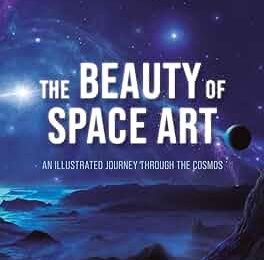Introduction
The universe, with its vast expanse of stars, planets, and galaxies, has captivated the human imagination for centuries. It’s a source of wonder and curiosity that has driven us to explore the cosmos, but it has also been a muse for artists who seek to express its beauty through their creativity. Space art, as a genre, has blossomed in recent years, offering a unique perspective on the universe and its mysteries.
The Intersection of Science and Art
Space art isn’t limited to mere imagination. It often involves a deep understanding of astrophysics and space science. Artists must grasp the complex interplay of celestial bodies, the physics of light, and the intricacies of cosmic phenomena to accurately depict them on canvas, in digital art, or through sculptures.
This intersection of science and art allows space artists to bridge the gap between the scientific community and the public. Through their work, they can make complex astrophysical concepts accessible and engaging to a broader audience, fostering a deeper appreciation for the universe’s wonders.
Capturing Cosmic Beauty
One of the most striking aspects of space art is its ability to capture the beauty of the cosmos. Artists use their creative skills to depict stunning nebulae, galaxies, and other celestial phenomena, turning them into visual masterpieces. These works of art enable viewers to connect with the vastness of the universe on an emotional level, evoking a sense of awe and wonder.
Through the careful use of colors, textures, and composition, space artists bring the cosmos to life in ways that astrophotography or scientific illustrations alone cannot. They infuse their creations with a sense of wonder and imagination, inviting us to explore the mysteries of the universe alongside them.
Inspiration from Space Exploration
Space art has evolved alongside humanity’s exploration of space. The achievements of space agencies like NASA, SpaceX, and ESA have provided artists with a wealth of inspiration. Iconic images of astronauts on the moon, the majestic rings of Saturn, and the swirling storms of Jupiter have all become subjects for artistic interpretation.
In recent years, the Mars rovers’ missions have sparked a new wave of creativity in space art. Artists imagine what it would be like to stand on the Martian surface, gazing out at the dusty plains and towering Olympus Mons. They envision future human missions to the Red Planet and the potential for interplanetary colonization, infusing their works with a sense of optimism and adventure.
Pushing Boundaries and Fostering Imagination
Space art isn’t limited to realistic depictions of the cosmos. It often pushes the boundaries of imagination, exploring the realms of science fiction and fantasy. Artists imagine alien worlds, extraterrestrial life, and futuristic space travel, sparking our imaginations and encouraging us to dream of what might be possible in the vastness of space.
These imaginative creations also play a crucial role in inspiring the next generation of scientists, engineers, and astronauts. They encourage young minds to explore STEM fields and foster a sense of curiosity about the universe.
Space Art as a Reflection of Human Spirit
In many ways, space art reflects the indomitable human spirit. It embodies our innate desire to explore, discover, and connect with the unknown. It reminds us of our capacity for creativity and innovation, pushing the boundaries of what we can achieve.
As we look to the future of space exploration, space art will continue to evolve and inspire. It will document our journey to the stars, capture the awe-inspiring beauty of the cosmos, and remind us that the universe is a canvas waiting for us to fill with our imagination and creativity.
Conclusion
Space art is a powerful medium that bridges the gap between science and creativity, capturing the beauty and wonder of the cosmos. It inspires us to explore the universe, fosters imagination, and reflects the human spirit’s unquenchable thirst for knowledge and discovery. As we gaze up at the night sky, let us remember that the cosmos is not only a source of scientific inquiry but also a wellspring of artistic inspiration, inviting us to express the beauty of the cosmos through the lens of our creativity.



